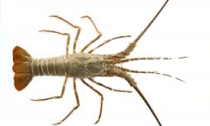
Pagrus pagrus
Known as the Red Porgy or the Common Sea Bream, this indicator is classified ‘Endangered’ on the IUCN (International Union for Conservation of Nature and Natural Resources) Red List of threatened species. Found over rocky, rubble, or sandy bottoms, this indicator feeds on crustaceans, fish and mollusks. It can be found as deep as 250m, but we certainly don’t expect any observations at that depth! The body is pinkish silver with an indistinct yellow spot on each scale on the upper half of the body, these spots giving a yellowish striped effect. There is some yellow marking on the snout and upper lip. The dorsal, caudal and pectoral fins are pink.
Read More








Social Profiles